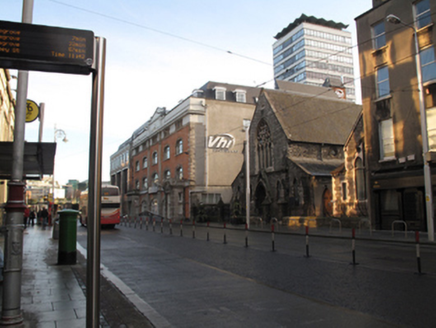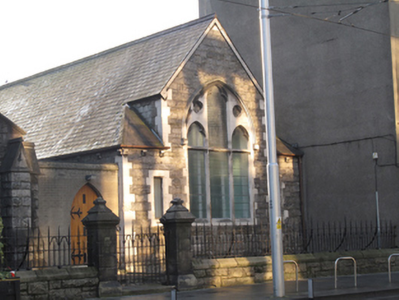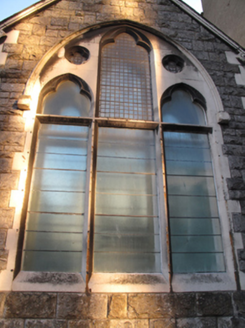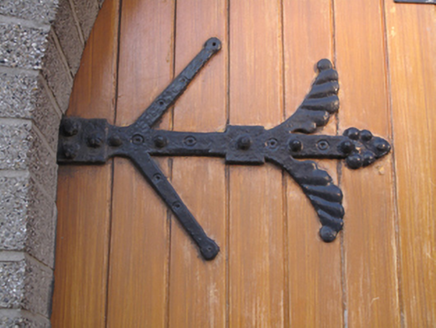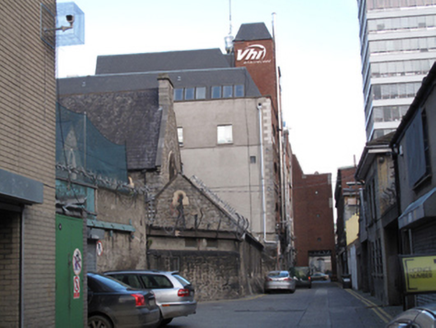Survey Data
Reg No
50010286
Rating
Regional
Categories of Special Interest
Architectural, Social
Original Use
Office
In Use As
Office
Date
1880 - 1900
Coordinates
316153, 234545
Date Recorded
08/12/2011
Date Updated
--/--/--
Description
Attached gable-fronted single-bay single-storey Gothic-revival Presbyterian church hall, built c.1890, to designs of Thomas Drew. Connected to former Presbyterian church to east, both now in use as offices. Pitched slate roof with roll-moulded ridge tiles and pair of hipped sections to either side of front gable. Cast-iron guttering supported on stone corbels. Rock-faced squared and coursed granite ashlar walls with smooth Portland stone quoins and dressings. Single pointed–arched Portland stone tripartite window opening with hood-moulding, splayed sill trefoil-headed lights and pierced panels with replacement glazing. Diminutive square-headed openings to either side with chamfered Portland stone surrounds and replacement glazing. East side elevation abutted by cement brick entrance porch, built c.1970, with pointed-arched door opening and double-leaf sheeted timber doors with iron door furniture. Gabled rear elevation abutted by lean-to with single pointed-arched window opening to gable having chamfered Portland stone surround with replacement glazing and original leaded overlight. Gravel front area enclosed to street by decorative wrought-iron railings set on rock-faced granite plinth wall with chamfered granite coping, all shared with adjoining church and accessed via matching iron gates on decorative granite piers with pyramidal granite capstones and trefoil finials. Rubble stone wall to rear of site with chamfered granite coping and later flat-roofed structure.
Appraisal
Formerly known as Great and Little Mary Street, Abbey Street derives its name from Saint Mary’s Abbey, whose extensive lands covered most of the northeast part of the old city of Dublin. The building was formerly known as the Abbey Church, and built to establish a Dublin base for the Scots, the congregation was eventually subsumed into the Presbyterian Church in Ireland, while retaining the name Scots Church. The hall echoes the plan of the earlier church while the spare Portland stone dressings form a pleasing contrast to the more decorative carved adornment of the earlier building. The ensemble remains associated and unaltered and although the buildings no longer serve their original function, they remain in use and together form a charming set-piece on this important streetscape.
